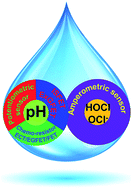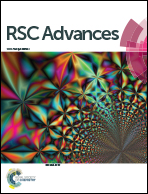Microfabricated electrochemical pH and free chlorine sensors for water quality monitoring: recent advances and research challenges
Abstract
Continuous, real-time monitoring of the level of pH and free chlorine in drinking water is of great importance to public health. However, it is challenging when conventional analytical instruments, such as bulky pH electrodes and expensive free chlorine meters, are used. These instruments have slow response, are difficult to use, prone to interference from operators, and require frequent maintenance. In contrast, microfabricated electrochemical sensors are cheaper, smaller in size, and highly sensitive. Therefore, these sensors are desirable for online monitoring of pH and free chlorine in water. In this review, we discuss different physical configurations of microfabricated sensors. These configurations include potentiometric electrodes, ion-sensitive field-effect transistors, and chemo-resistors/transistors for electrochemical pH sensing. Also, we identified that micro-amperometric sensors are the dominant ones used for free chlorine sensing. We summarized and compared the structure, operation/sensing mechanism, applicable materials, and performance parameters in terms of sensitivity, sensing range, response time and stability of each type of sensor. We observed that novel sensor structures fabricated by solution processing and operated by smart sensing methodologies may be used for developing pH and free chlorine sensors with high performance and low cost. Finally, we highlighted the importance of the concurrent design of materials, fabrication processes, and electronics for future sensors.


 Please wait while we load your content...
Please wait while we load your content...